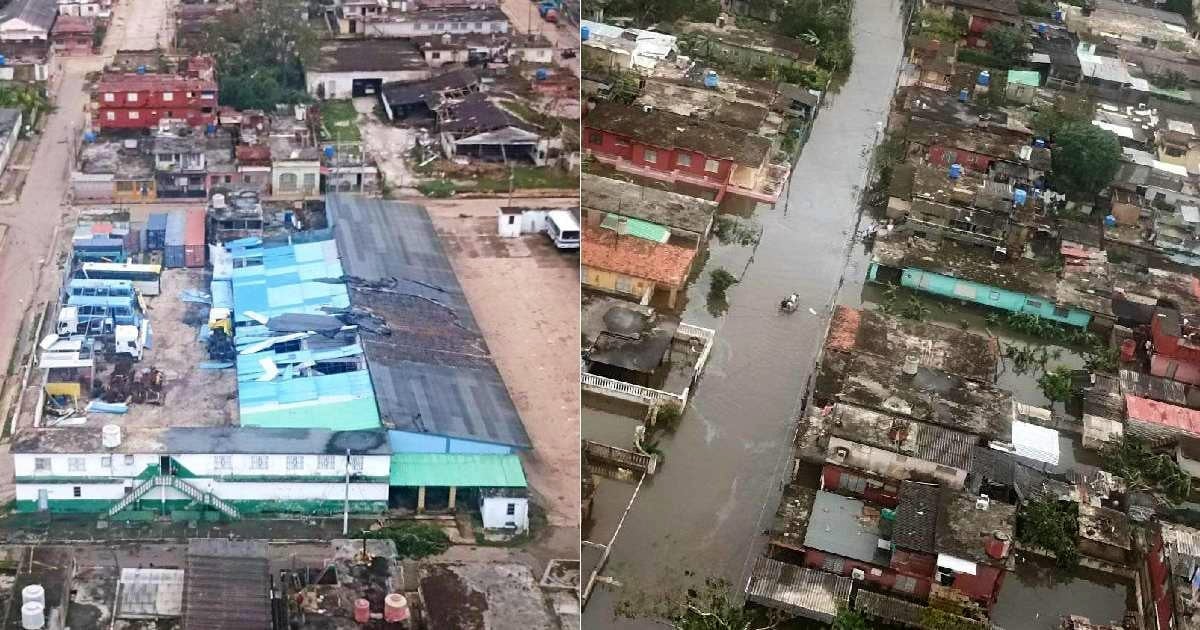
The 2024 hurricane season had a devastating impact, resulting in 378 deaths and economic losses exceeding $140 billion, making it one of the most expensive in history.
Cuban meteorologist Raydel Ruisanchez explained on Facebook this Monday that, during this period, which ends on November 30, 18 tropical storms formed, of which 11 became hurricanes and 5 reached great intensity.
Among these systems, two were Category 5 hurricanes, a phenomenon that had only been recorded in five previous seasons (2005, 2007, 2017, 2019).
Hurricane Beryl set records as the earliest Category 5 cyclone ever recorded, while Cyclone Milton was the fifth most intense in the Atlantic basin and the strongest globally this year.
Of the 18 systems, 12 made landfall, including the most destructive ones, demonstrating that it's not the number of cyclones that matters most, but their intensity and ability to affect populated areas, Ruisanchez noted.
He also noted that the floods caused by heavy rain resulted in the highest number of deaths, highlighting the vulnerability of many areas and the need not to underestimate this danger.
Although the initial forecasts predicted an extremely active season, it turned out to be above normal, resulting in significant damage and a tragic number of lost lives.
Cuba was directly impacted by two powerful hurricanes: Oscar (Category 1) and Rafael (Category 3), which left a trail of destruction and significant losses in their wake.
On October 20, Oscar struck the eastern region, primarily the province of Guantánamo, causing immense flooding that isolated entire communities and severely damaged homes, infrastructure, and agriculture in the municipalities of San Antonio del Sur, Imías, Maisí, and Baracoa, which were the hardest hit.
However, the most significant consequence was the loss of at least eight human lives, according to official government figures, which also reported two missing persons. As of now, this information has not been updated; however, residents of the affected areas in Guantánamo maintain that the number of fatalities is higher.
Two weeks later, on November 6, Rafael unleashed its fury on the western tip of Cuba, causing devastating damage in the provinces of Artemisa and Havana, as well as significant destruction in Mayabeque and Pinar del Río.
The hurricane dealt a severe blow to the western part of the country, causing the collapse of thousands of houses and other buildings, a widespread blackout that lasted over a week, damage to electrical and telephone networks, and significant destruction in agriculture. This has further intensified the sharp economic crisis that Cuba has been experiencing for the past five years.
The 2024 hurricane season was marked by above-average activity, featuring 18 named storms, 11 hurricanes, and five major hurricanes, surpassing the historical averages of 14 storms, seven hurricanes, and three major hurricanes, according to the National Oceanic and Atmospheric Administration (NOAA).
In addition to Beryl, the scientific agency highlighted Cyclone Helene, which marked a milestone as the deadliest hurricane in the United States since Katrina in 2005. It made landfall as a Category 4 storm on the Gulf coast of Florida, resulting in a preliminary toll of over 150 direct deaths, mainly in North and South Carolina.
Milton, another of the most devastating hurricanes, made landfall in Florida as a Category 3, causing an outbreak of 46 tornadoes and rainfall accumulations of up to 15 inches in some areas. Its rapid intensification, with a 90 miles per hour increase in 24 hours, was one of the fastest ever recorded.
Additionally, the NOAA highlighted that this season was marked by an increase in activity following the typical lull after the peak of the season.
In that regard, it was mentioned that 12 storms formed after the climatic peak in September, including seven hurricanes recorded from the 25th of that month, the highest number in this period on record.
Filed under: